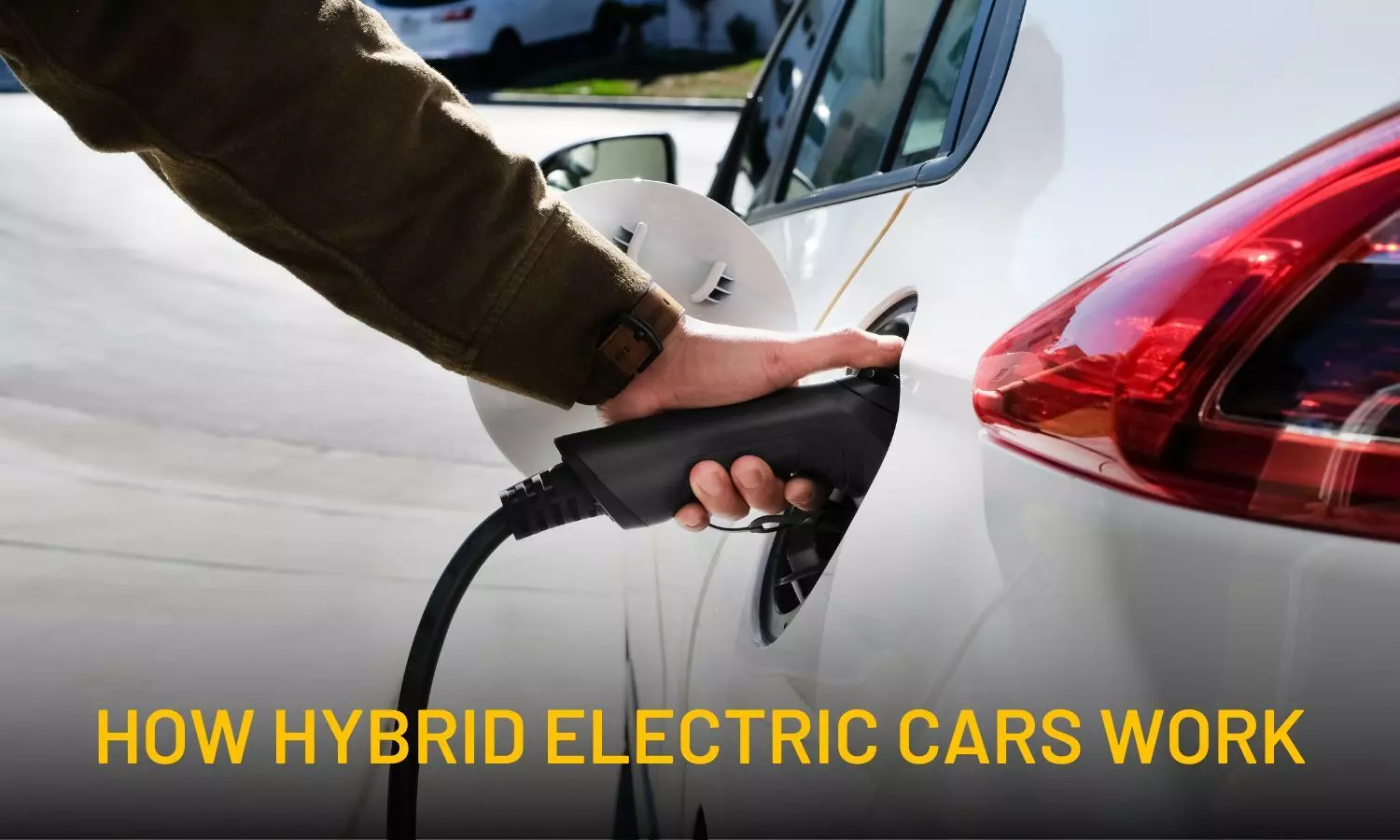Just In
How Hybrid Electric Cars Work: A Complete Guide to Hybrid Technology in India


Learn how hybrid electric cars work in India. Know about its engine mechanics, fuel efficiency, battery functions and more.
Hybrid electric cars are a good option as they are ideal for sustainable driving for eco-conscious consumers in India. These vehicles feature a combination of a traditional internal combustion engine and an electric motor. They not only improve fuel efficiency but also reduce emission making it perfect for busy cities of India. Here is all you need to know about the hybrid vehicles in detail. The article will give you an understanding on how they work which will help you in making an informed choice.
Major Components of a Hybrid Electric Car
Hybrid electric cars operate through a combination of several major parts including the ones listed below-
1. Battery (Auxiliary): This small battery powers the car’s accessories and helps the car start before the main traction battery kicks in.
2. DC/DC Converter: This device changes high-voltage power from the main battery to lower-voltage power, keeping the auxiliary battery and car accessories running.
3. Electric Generator: During braking, the generator produces electricity from the wheels’ rotation and stores it in the main battery. This is part of the regenerative braking system.
4. Electric Traction Motor: The motor is powered by a traction battery. It drives the wheels which help in electric propulsion.
5. Exhaust System: It directs the gases produced by the engine out of the car, while a catalyst within it reduces emissions.
6. Fuel Filler: The fuel filler allows you to add gasoline to the vehicle, stored in the fuel tank for when the engine needs it.
7. Internal Combustion Engine: This engine is responsible for igniting a mixture of air and fuel. It powers the car and charges the main battery when needed.
8. Power Electronics Controller: This controls the flow of electric power, adjusting the speed and torque of the electric motor.
9. Thermal System: This cooling system ensures the engine, electric motor, and other parts stay within a safe temperature range.
10. Traction Battery Pack: The main battery is designed for storing energy that powers the electric motor and supports other systems.
11. Transmission: It transfers power from both the engine and the electric motor to the wheels.
How Do Hybrid Cars Work?
The mechanics of hybrid cars depend on cooperation between the engine, electric motor, and battery. Read on to learn how these elements work together -
1. Starting the Engine: Hybrid cars start with the combustion engine running. The car is powered by the engine which simultaneously charges the battery.
2. Electric Motor Assist: The electric motor assists the engine when accelerating or needing extra power. The motor pulls power from the battery to provide an added boost of torque. Some hybrids can drive purely on electric power at low speeds (up to around 40 km/h). Users can switch to the engine for higher speeds.
3. Regenerative Braking: The regenerative braking system captures energy that would usually be lost as heat when you brake. The electric motor acts as a generator to convert this kinetic energy into electricity and store it in the battery.
4. Battery Charging: The engine and braking system work together to keep the battery charged. It allows the electric motor to assist whenever needed.
5. Energy Management: A control system monitors driving conditions, battery levels, and power requirements. It helps in deciding when to switch between the engine and motor for optimal efficiency.
Types of Hybrid Cars
Hybrid electric vehicles come in various types, each offering unique benefits and tailored to different driving needs. Read on to learn about the different types of hybrid cars -
1. Full Hybrid: Full hybrids can run on the combustion engine, the electric motor, or both. They often feature an electric-only mode for short trips and rely on the engine for longer journeys.
2. Mild Hybrid: Mild hybrids use the electric motor primarily to support the engine but cannot run on electric power alone. The motor helps reduce fuel use by assisting during acceleration and managing the engine’s start-stop function.
3. Plug-in Hybrid (PHEV): These hybrids have a bigger battery. It allows for more all-electric travel. The battery can be recharged by plugging it in. It offers a longer electric-only range before switching to the engine.
4. Series Hybrid: In series hybrids, only the electric motor powers the wheels. The engine acts as a generator to recharge the battery when needed. This setup is also known as a range extender.
5. Parallel Hybrid: The engine drives the wheels in this type of hybrid car. With the electric motor providing additional power during acceleration or challenging terrain. This setup improves fuel efficiency as the engine’s workload is reduced.
6. Series-Parallel Hybrid: This type of hybrid car combines both series and parallel modes. This flexibility allows for better performance and fuel efficiency.
7. Hydrogen Fuel Cell Hybrid: Hydrogen fuel cells generate electricity through a reaction between hydrogen and oxygen, the electric motor. It emits only water vapour. These hybrids offer a clean and sustainable solution.
Conclusion
Hybrid cars offer a greener alternative to traditional gasoline vehicles, combining fuel efficiency, reduced emissions, and innovative features. For Indian drivers, hybrids represent a smart step toward sustainable transportation, especially as cities adopt greener policies and consumers seek more eco-friendly choices. As more manufacturers enter the hybrid market in India, the choices for hybrid electric vehicles will continue to expand. Before making a purchase, consider your budget, driving needs, and the potential benefits of a hybrid car.

© 2024 Hyderabad Media House Limited/The Hans India. All rights reserved. Powered by hocalwire.com






